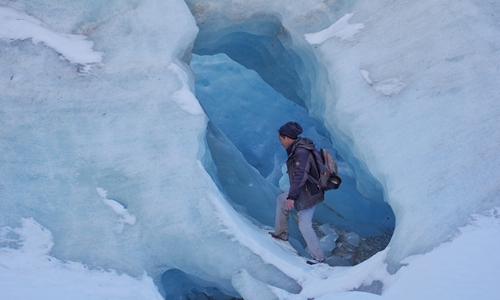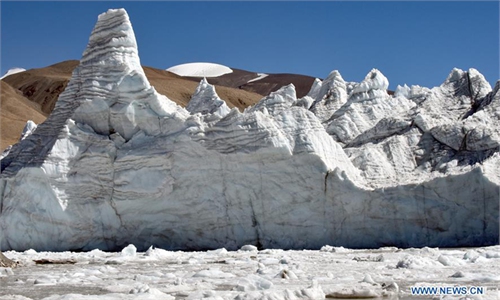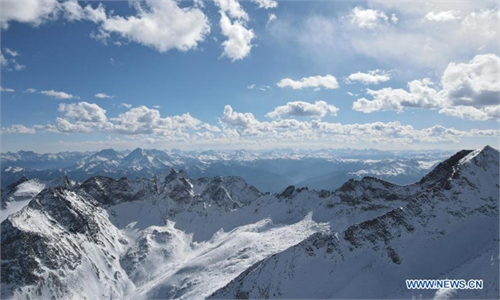
Wang Xiangjun explores a glacier in Bomi county, Southwest China's Tibet Autonomous Region in November 2017. Photo: Courtesy of Wang Xiangjun
Wang Xiangjun, a young Chinese adventurer dubbed "Glacier Bro" by his fans, has been missing for eight days after falling into a glacier waterfall during a recent trip to Southwest China's Tibet Autonomous Region. Local rescuers have been trying to find him, but said it is highly unlikely he has survived.
Wang fell into a glacier waterfall in Lhari County of Nagqu City in northern Tibet on December 20, The Paper reported. The local police and emergency departments have joined the rescue efforts, but no traces of him have been found so far.
"He could be under an ice floe. The water is 10 to 20 meters deep. It's almost impossible (for him to survive)," said a local official.
The local official said people can stand on the ice on the river where the accident took place, but the ice is not thick enough in some places, which caused Wang's fall. Further searches cannot be carried out given the current state of the glacier, so rescuers have to wait for the floating ice to melt so they can continue the rescue.
Wang, 30, has photographed over 70 glaciers in southwest China since 2013, and gained over 3 million followers on short video platform Douyin through videos of his adventures. He was dubbed "Glacier Bro" and "King of Adventure."
On Saturday, Wang's brother used Wang's Douyin account to share one last video of the waterfall, with captions saying, "My brother lies forever in his favorite waterfall. We hope that people do not hype [his demise]. He was obsessed with glaciers all his life while dedicating himself to them, and this was the best place for him to rest."
Wang said in his speech at the 25th United Nations Climate Change Conference in 2019 that his mission is to help raise awareness about global warming in China and the world through photographing glaciers.
Global Times


